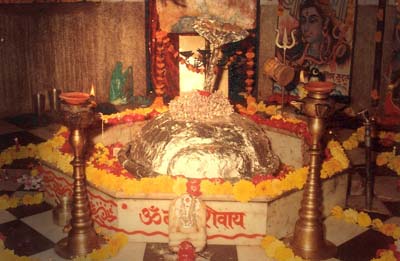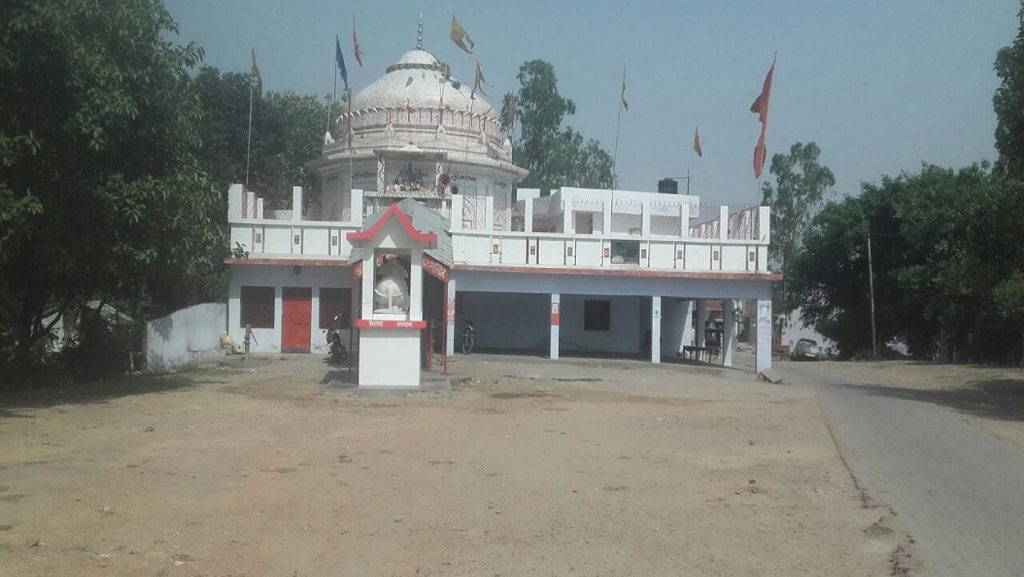 Article by Prof Ajay S Rawat as appeared in Kumaon Plus (18th July 2010) A Weekly Supplement with Times of India in Kumaon Region
Article by Prof Ajay S Rawat as appeared in Kumaon Plus (18th July 2010) A Weekly Supplement with Times of India in Kumaon Region
Moteshwar Mahadev KASHIPUR, located in Kumaon Tarai has become a synonym of industrial development and agricultural prosperity today. It is an old township and 3 Lms from it is sited the ancient settlement of Ujjanak. According to tradition it was famous as one of the Jyotirlings and the temple of Lord Shiva located here is presently known as Bheem Shankar Jyotirling or Moteshwar Mahadeo. The former name is popular since ancient times but the present appellation is derived from the stone, which after surfacing from the ground has assumed the shape of a phallus. It is supposed to be the divine phallus of Lord Shiva, which first surfaced in the hoary past according to Abhishek Nagar a local resident and a scion of the priestly class. The phallus of the present temple is huge and is still growing. This kind of divine phallus is not seen in any part of the country. Hitherto it has reached almost the height of the second floor of a big house and as it is tick and huge in size, the temple has been named as Moteshwar Mahadeo. The original temple was constructed in 302 AD and the present temple on the ancient site has been remodeled recently. In the temple premises is also housed a Bhairav Nath temple and a kund, a small water tank known as the Shiv Ganga Kund.
 Regarding the historicity of the temple, Nitin Bhandari a local historian is of the view that in proximity to the temple was sited the 'ashram' of the legendary teacher Dronacharya who imparted military training to the Pandavas and Kaurvas in this area. It is believed by the devotees that Dronacharya motivated his disciple Bhin to renovate the temple and this is why the shrine was named as Bheem Shankar Jyotirling. The great Chinese pilgrim Hiuen Tsang visited this place. Ujanak during the 7th century AD and has mentioned it as Govisana in his memoirs. The ruians of the ancient settlement can still be seen near the present city of Kashipur. The present township of Kashipur was however settled during the 16th century AD by Kashi Nath Adhikari the military governor of the Chand Kings of Kumaon. During the British period this place assumed importance as a great centre for cotton growing.
Regarding the historicity of the temple, Nitin Bhandari a local historian is of the view that in proximity to the temple was sited the 'ashram' of the legendary teacher Dronacharya who imparted military training to the Pandavas and Kaurvas in this area. It is believed by the devotees that Dronacharya motivated his disciple Bhin to renovate the temple and this is why the shrine was named as Bheem Shankar Jyotirling. The great Chinese pilgrim Hiuen Tsang visited this place. Ujanak during the 7th century AD and has mentioned it as Govisana in his memoirs. The ruians of the ancient settlement can still be seen near the present city of Kashipur. The present township of Kashipur was however settled during the 16th century AD by Kashi Nath Adhikari the military governor of the Chand Kings of Kumaon. During the British period this place assumed importance as a great centre for cotton growing.
Lord Shiv is venerated in the temple of Moteshwar Mahadeo in the phallus form. He represents the Supreme Being that dissolves to recreate in the cyclic process of creation, preservation and dissolution. His Natraj dance represents both the destruction and the creation of the universe and reveals the cycles of birth, death and rebirth. Those who worship him with a feeling of total surrender in the temple of Moteshwar Mahadeo, their desires are fulfilled and they can even achieve salvation and will be redeemed from the cycle of birth and rebirth. His dance of bliss is therefore for the welfare of the world. Under his feet he crushes the demon of ignorance and he is the bliss giving God of the yogis, self controlled and celibate. According to the scriptures, 'chitbhashm' or human ash is considered as unholy or inauspicious. If even touched by mistake, ome is required to take a cleansing bath to purify his inner self. But this unholy ash and its negative impact becomes auspicious by merely visiting this temple. Moteshwar Mahadeo according to the devotees of the temple is holy and divine and by visiting the temple all the problems of the devotee are taken care of by the Lord.
About the origin of the divine phallus of Lord Shiva, which is worshiped in Moteshwar Mahadeo it is believed that the 'tapas' or penance undertaken by the lord generated so much heat that his body transformed into a pillar of fire akin to a phallus and threatened the very existence of the whole world. The gods did not know how to control the fire generated by Shiva. Shakti was therefore created in the form of divine vessel, which contained this fire and saved the cosmos from untimely destruction. It is important that shakti is defined first and formost as power but the term is also used when referring to the multiple names that represent the goddess characteristics as well as individual goddesses like Parvati the consort of Lord Shiva.
Prof AJAY S RAWAT
https://www.moteshwar.org
